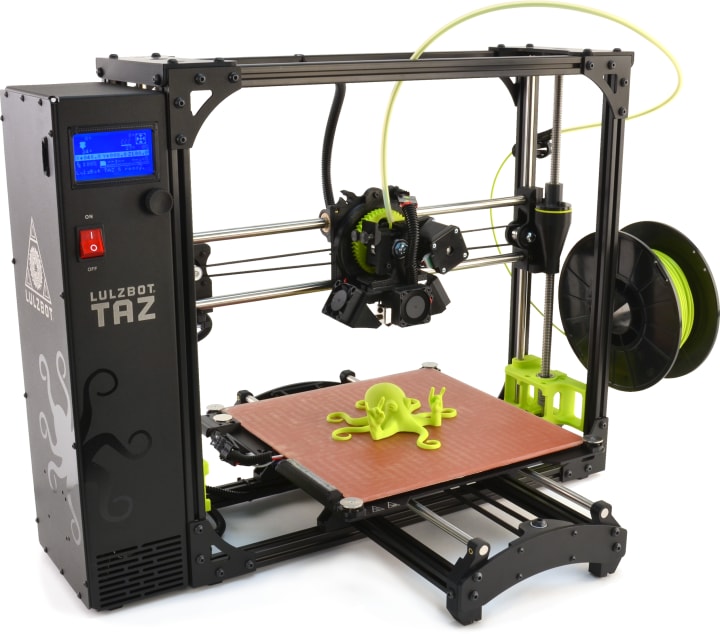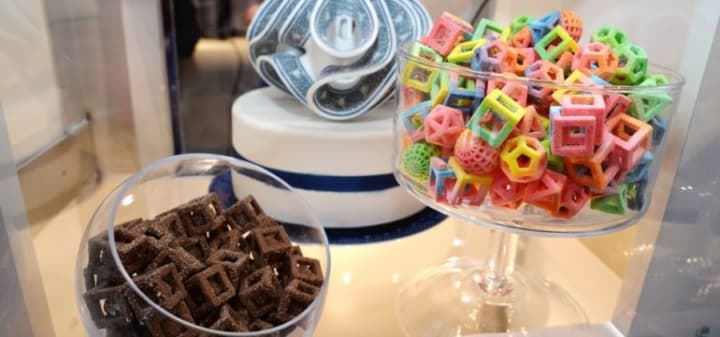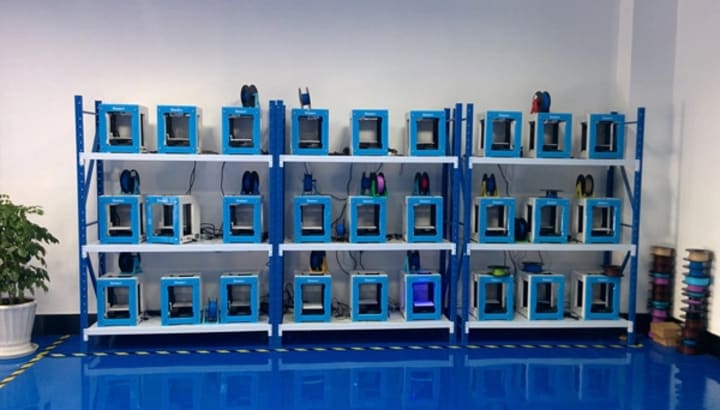What Can't We 3D Print?
Finding the limits of cutting-edge tech

The technology itself has existed for some time now: the general concept has been referenced as far back as the 1940's and 50's, and we've had basic 3D printers since the 80's and 90's. The main method, fused deposition modeling, involves the extrusion of hot plastic from a tube onto a flat build plate to create a 3D object - typically encoded in .stl or .gcode files by a slicing program or CAD software.
But where is the limit? Small objects made from plastic are easy - thirty minutes to an hour, a bit of tweaking, and you have a nice keychain, or a cool little figurine for your desk. A few more hours, you could have a flowerpot, a bust of your favorite historical figure, or the components for an RC helicopter. For hobbyists and entry-level designers, builders, and artists, even a basic 3D printer has seemingly limitless potential.

PLA - Polylactic Acid - is a biodegradable and renewable plastic that is the most common filament used in 3D printing, and it's derived from corn starch and sugar cane! In the end, for printing something from plastic, your only costs are the material and the time. Everything else you can design and build from - literally - the ground up.
Of course, you can't print wood - and you can't print metal. Or can you? Selective Laser Manufacturing (SLM) uses a high powered laser and metallic powder to selectively fuse and form solid structures out of a single type of metal. Direct Metal Laser Sintering (DMLS) uses a similar process but can use different metal powders to create and fuse metal alloys. So now we've removed bicycles, car parts, mechanical components, and metals from our list of things we can't 3D print.

On a side note, you actually can 3D print wood; a company called Forust has recently developed a lignin (essentially plant resin) and sawdust-based filament that can be extruded just like plastic in a 3D printer, but is 100% recycled wood. They offer colors and patterns akin to traditional woods such as teak, mahogany, or even ebony, and promise high quality and sustainable materials for all sorts of projects, business or consumer.
Likewise, large scale metal 3D printing is not impossible. Elon Musk, owner of SpaceX and Tesla, has a superalloy of stainless steel that he has used to 3D print the engines of his Dragon V2 rocket. Because, y'know, why not? Inconel is a unique blend of nickel, chromium, iron, and many other metals that is both highly durable and resistant to corrosion, and apparently capable of being 3D printed to create large structures to shoot into space.
So you can 3D print with plastics, metals, and even wood - surely you can't 3D print something that you can eat? Wrong! 3D printing confectionaries, pastries, and other food items has actually been catching on in the past few years in molecular kitchens and fine cuisine. By using sugars, doughs, syrups, and other malleable semi-solid edibles in custom machines, cooks have been printing all sorts of tasty treats for their customers to try.

It turns out there isn't a whole lot that you can't actually 3D print. You can be limited by design and size - if your printer is too small for your project, you obviously can't build it unless you make it smaller or cut the pieces up into smaller parts. You, personally, can be limited by materials available - but with every year we get new materials and new printers capable of doing even more than the last iteration, up to and including carbon fiber or fiberglass-based filaments. With a big enough budget and a long enough timeframe, the possibilities are seemingly endless.
Legally (note: I am not a lawyer or attorney, just stating common sense things here), you can be prosecuted for copying a specific design or part if it's trademarked or patented - if the company comes across your work and decides to do so. Depending on the company and the design, it could be more or less likely, but copyright infringement is always something to watch out for. There's also the controversy currently surrounding 3D printed firearms - and while I won't offer an opinion on that specific subject matter, I will say that while it is currently a legal gray area, it most likely will not remain so for long, and advertising the fact that you can produce guns at scale is probably a bad idea.
So, provided you use your brain, your time, and have a bit of money to burn, you can print almost whatever you want. Get the right printer, the right material, the right design, and get to work. The technology is new and exciting, and we've only begun scratching the surface of what we're capable of doing with it - yet we've already prototyped 3D printed organs and semi-functional organelles, 3D printed objects in the vacuum of space, and 3D printed objects to send to space.
At this point, it's safe to say the only thing you can't 3D print is the thing you can't design to be printed. Sooner rather than later, we may see another industrial revolution, this time at the ends of 3D printing nozzles instead of manufacturing lines.
Disclaimer: This is not a paid endorsement or even a sponsored posting for any of the aforementioned companies, brands, or ideas; This is simply a high level overview of what our current levels of 3D Printing technology allow, and point of discussion for where the technology may go in the future.

About the Creator
Taylor Inman
I'm a Computer Engineering major who enjoys reading, writing, fitness, and Crafts, and who occasionally writes stuff that can be published. Most is opinion, some is fact, a good majority is fiction - unless otherwise specified. Enjoy!






Comments
There are no comments for this story
Be the first to respond and start the conversation.